Water (Importance & Its Sources)
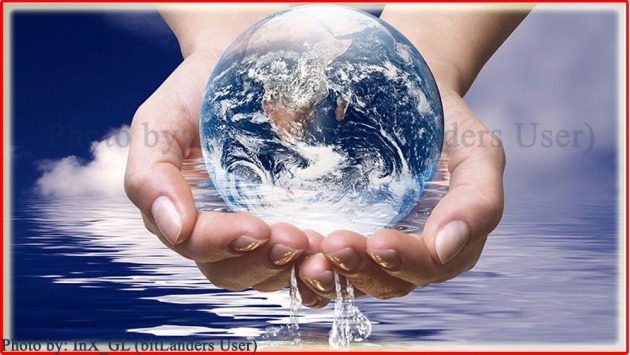
Credit: Inx_GL Via bitLanders
Hello Fellows, as I said in my previous blog, I will write a blog on water, so here it is.
THE IMPORTANCE OF WATER:
Water is essential in our lives. It is necessary for all living things. Three-fourth part of our earth has covered with the water in the form of oceans, rivers, lakes, and in the shape of the iceberg (Glaciers). No living thing can survive without water.
Only about three percent of water on the earth is suitable for drinking, farming and different types of manufacturing. Most of this water, however, is not easily available for use because it is in the form of ice. Fresh water is too little at about one percent of a large amount of water. All living things on land have to depend on this one percent of fresh water for survival.
Importance of Water
Video Credits: by DropofLifeUK via YouTube
Here, I would like to inform you interesting information about water except for my title. Water keeps its level always, and I can prove this with an experiment, I hope that, when you experience this test at home, you will enjoy a lot. Let’s Start it.
- Take two transparent plastic bottles (disposable cold drink plastic bottles will also work), one straw, a wooden/cemented block, and some water in the jug. Please drill one hole in each cylinder (bottles). Then arrange these objects as shown in the pictures.
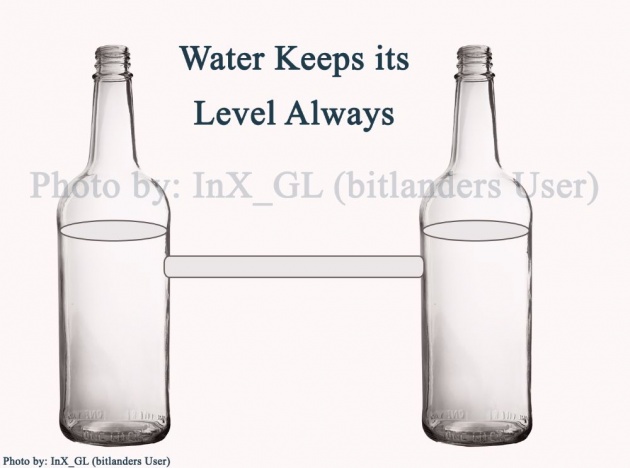
Credit: InX_GL Via bitLanders
- Now as you add water to a bottle, it will move through the straw to another bottle, and the water level in both the bottles will remain the same. Repeat this experiment at your home, and you will observe water always keeps its level.
SOURCES OF WATER:
There are many sources of water in the world. I am elaborating some of them.
1- RAINWATER:
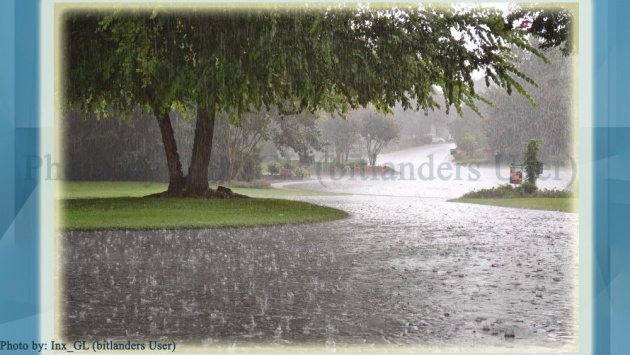
Credit: Inx_GL Via bitLanders
One of the important sources of water is Rain. Rainwater is pure water. But, as we know that it passes through the atmosphere, it comes in contact with dust particles, germs and bacteria and some of the gases, which are present in the air, Continues rainfall washes down the atmosphere clean. Rainwater is not suitable for drinking. It must be purified and made suitable for drinking. This water may contain soluble and insoluble impurities and germs.
We can purify water by filtration and boiling. Later I will elaborate purification of water, keep reading, please.
How to purify water by filtration?
- First of all, take some water or rainwater in a beaker. You need a filter paper, conical flask, and funnel.
- Now fold the filter paper twice that it can easily fit in the funnel. Now filter the water with the help of filter paper, funnel and conical flask. You will get your filtered water in a conical flask.
- Now turn out the filter-paper and observe it. You will see dust particles, humus and some other impurities.
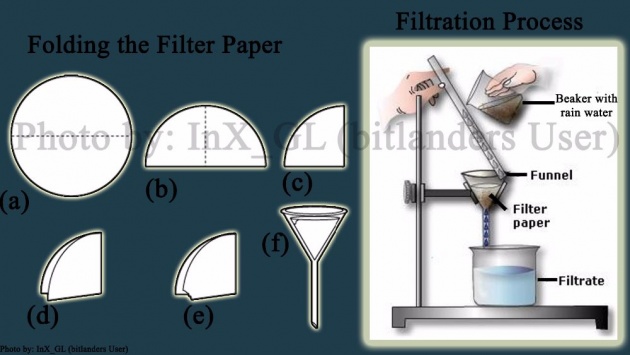
Credit: Inx_GL Via bitLanders
Did you see that?
Okay, you know, dust particles, humus and other impurities are insoluble substances in water, that’s why we can filter them from the water.
Let’s proceed to the second source of water which is Underground water.
2- Underground water:
Some of the rainwater goes into the earth until it meets hard rock. This water cannot go below this hard rock. Here it goes on accumulating and form a reservoir. This reservoir of water over the hard rock, below the earth, is called “Underground Water”. This water is free from suspended impurities because it is filtered by nature as it passes through several layers of the soil. However, this water may contain soluble salts of calcium and magnesium.
There are two sources to get underground water.
1- Well Water:
When the earth surface is dug deep, water reservoirs found theirs above the impervious rocks. This reservoir of water is called a “WELL”. The depth of the wells depends on the types of soil and rock.
Well, water contains soluble impurities. The nature of contaminants depends upon the nature of soil which surrounds the well. Usually, the water of a deep well is pure than that of a shallow well. Sewage impurities may find their way into shallow wells.
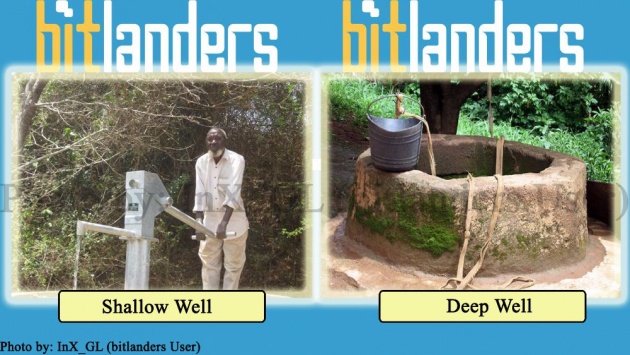
Credit: Inx_GL Via bitLanders
Another way to obtained underground water is by boring. Similarly, hand pump and tube wells are one of the other ways to get underground water.
Credit: Inx_GL Via bitLanders
2- Spring Water:
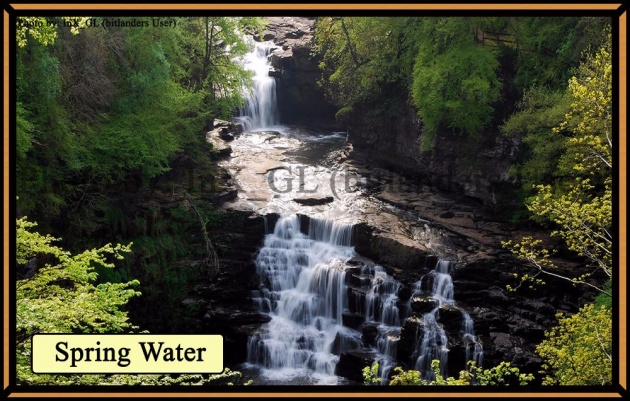
Credit: Inx_GL Via bitLanders
Most of the rainwater accumulates over the impervious rocks under the earth. This water erects pressure and comes out in the form or spring from any available opening. This water is known as “Spring Water”.
Usually, this water contains dissolved salts and minerals, but it is free from suspended impurities. Some springs have water, which is called “Mineral Water” because they contain soluble minerals. It has characteristics taste and smell and can also use for medicinal purposes.
3- Rivers and Lakes:
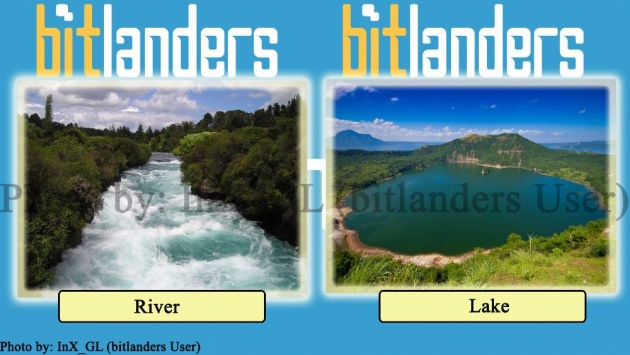
Credit: Inx_GL Via bitLanders
The water in the rivers and lakes comes from rain and melted snow on the mountains. The water flows down the hills and then it goes into the rivers. This water contains some soluble salts and suspended impurities. The river water may also contain germs which cause dangerous diseases such as typhoid, dysentery, cholera, jaundice, etc.
Rivers and lakes are the most important sources of water for all purposes.
4- See Water:
A significant amount of water is in a shape of the seas. The sea water contains soluble and insoluble impurities. It is not suitable for drinking, farming and any manufacturing purposes. However, we get table salt from the sea water. Table salt is known as sodium chloride (NACL).
PURIFICATION OF WATER:
We can purify water by
1- BOILING:
The straightforward and easy way to make a small quantity of water safe for drinking is to boil it for at least ten minutes. Boiled water may be strained through a clean cloth and stored in clean containers. Suspended impurities will remain on fabric. Now, this water is suitable for drinking.
2- Aeration:
As we know that many germs cause different types of diseases, so it's essential to kill these bacterias before we use water. Air and sunlight are very effective in killing bacterias. In some of the big cities, aeration is used instead of chlorine for killing germs. In this technique first of all rivers or lakes, water passes through filtration tanks. Now the filtered water transferred to another tank where water is thrown up in the air with the help of great fountain. In the air, water splits up into drops. When the water drops come in contact with air, some oxygen from air is absorbed in water. This oxygen kills all the germs, Now the water is free from all impurities and has a good taste and very safe for drinking.
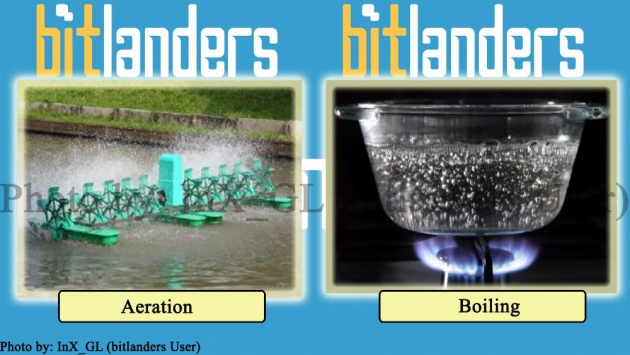
Credit: Inx_GL Via bitLanders
3- Filtering:
Another method for removing the suspended impurities is filtration of water. In this way, rivers and lakes water collect in a large filtration tanks. The filtration tanks consist of beds of sand, gravel and stones. When contaminated water passes through these beds, it is purified and stored at the bottom. This clean water is then pumped and stored in overhead reservoirs, from where its supplied to houses and factories.
There are two methods of filtration, by passing through sand, gravel, stones, and powdered charcoal and filtered with the help of filter paper.
- For filter the water by method 1, you need to take three pitchers with small holes in their bottoms. Some cotton placed over the holes. Take a pitcher half filled with powdered charcoal, gravel and the lower pitcher contains sand. We will pour the contaminated water in the uppermost pitcher. It trickles down from one pitcher to the next and stores in a bucket. Water in the bucket is free from suspended impurities. This water is suitable for drinking.
- For filter the water by method 2, first of all, take some muddy water in a glass. Filter the water with the help of filter paper. The filter paper is folded twice to have four folds. Keep three folds on one side and the one fold on the other side to give it the shape of a funnel.
- Pour polluted muddy water on the three-folded side of the filter paper with the help of a stirrer. Collect the filtered water into the clean beaker or glass.
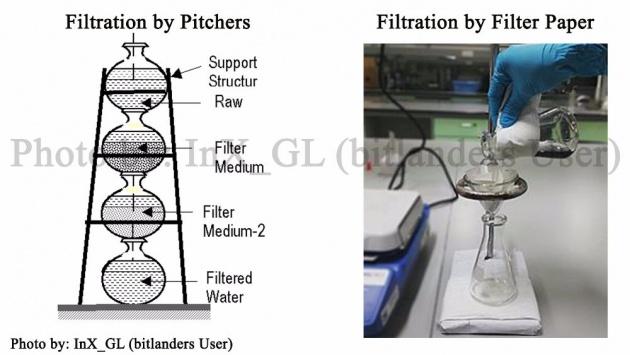
Credit: Inx_GL Via bitLanders
Now, this filtered water is free from all the suspended impurities. You can see many contaminants on the filter paper.
Why Care About Water? | National Geographic
Video Credit: by National Geographic via YouTube
Pollution of Water:
Everything, which affects the environment adversely, is known as POLLUTION. All types of waste materials are known as POLLUTIONS.
The increase in population is one of the important factors of pollution. The people are polluting air, land and water through their lifestyle. Similarly, a large number of factories and industries release the untreated sewage in nearby ponds, rivers and seas. Nowadays farmers use chemicals to kill insects and obtaining good crops. The effect of the compounds on the earth is not good for a long time. The effects of those chemicals reach up to the rivers and seas by rain. They make the water polluted. As a result of which animals and plants are affected by polluted water.
PREVENTION OF WATER POLLUTION:
Some of the methods are given below to prevent water pollution:
1- All types of waste materials should be dumped in the proper places.
2- Public should make sure that they don’t leave any garbage on the beaches when they go on the picnic to seaside or water reservoirs.
3- Factories and industries must treat sewage water before moving into the ponds, lakes, rivers and seas.
4- Factories and industries should at least process the waste items before dumping into the water.
5- Farmers should avoid the unnecessary use of pesticides and herbicides. They should try to depend on nature.
6- Schools and all type of media should start awareness among the children about the water pollution and other kinds of pollution.
So, I have written enough. The purpose of my such like these posts is to save animals, plants, and water for us for our next generations and earth.
Next Topic will be about "Human Body" or may be "Our Health".
Till then "TATA BYE BYE"
© Copy Right-InX_GL All right reserved 2017




